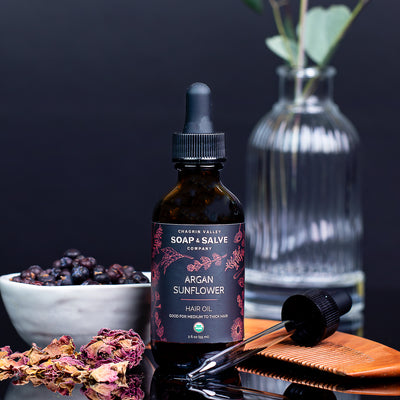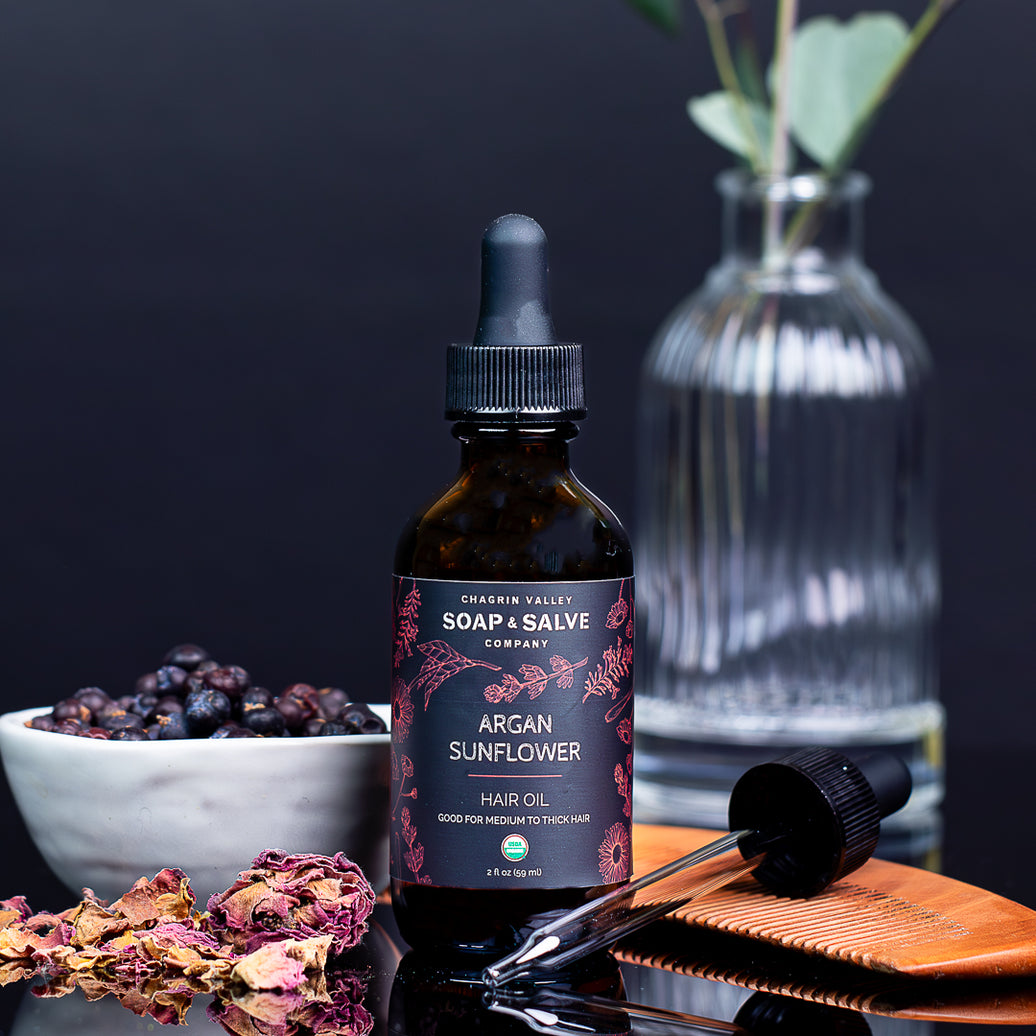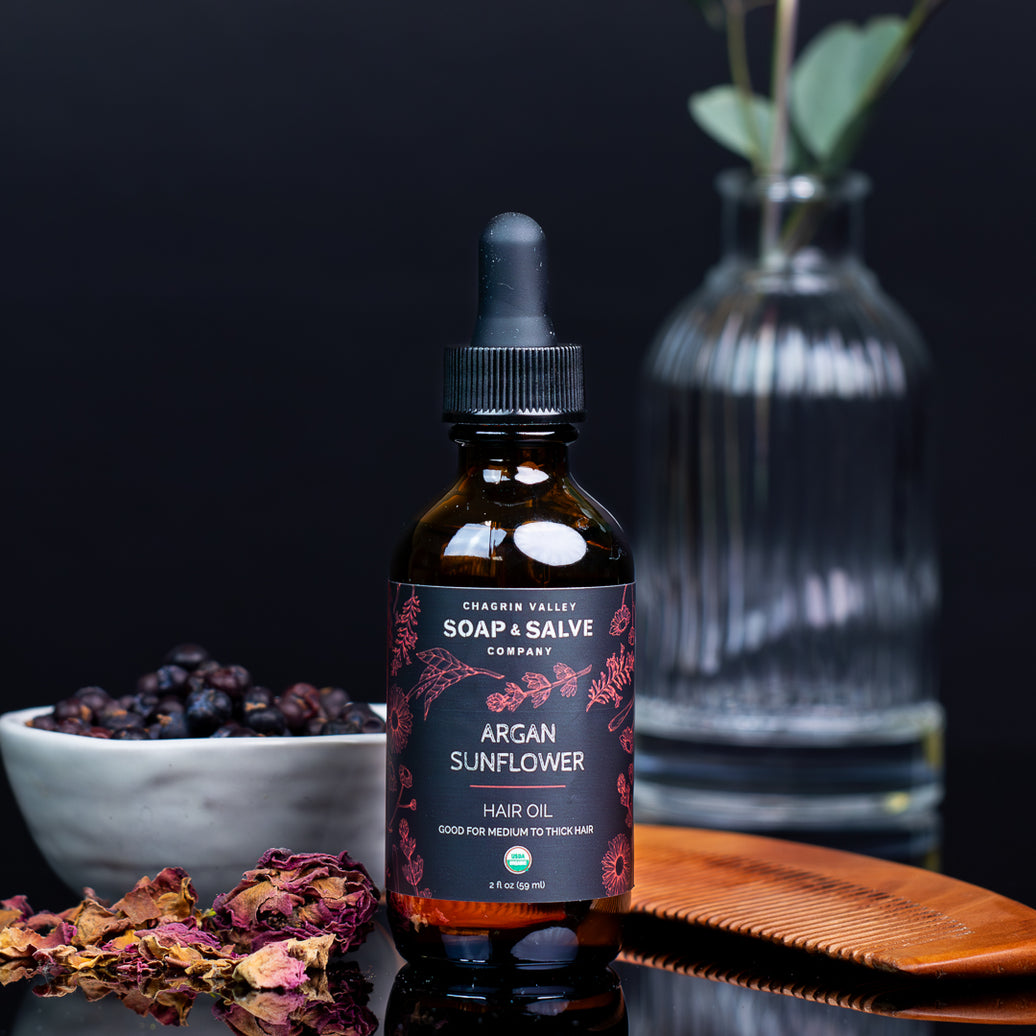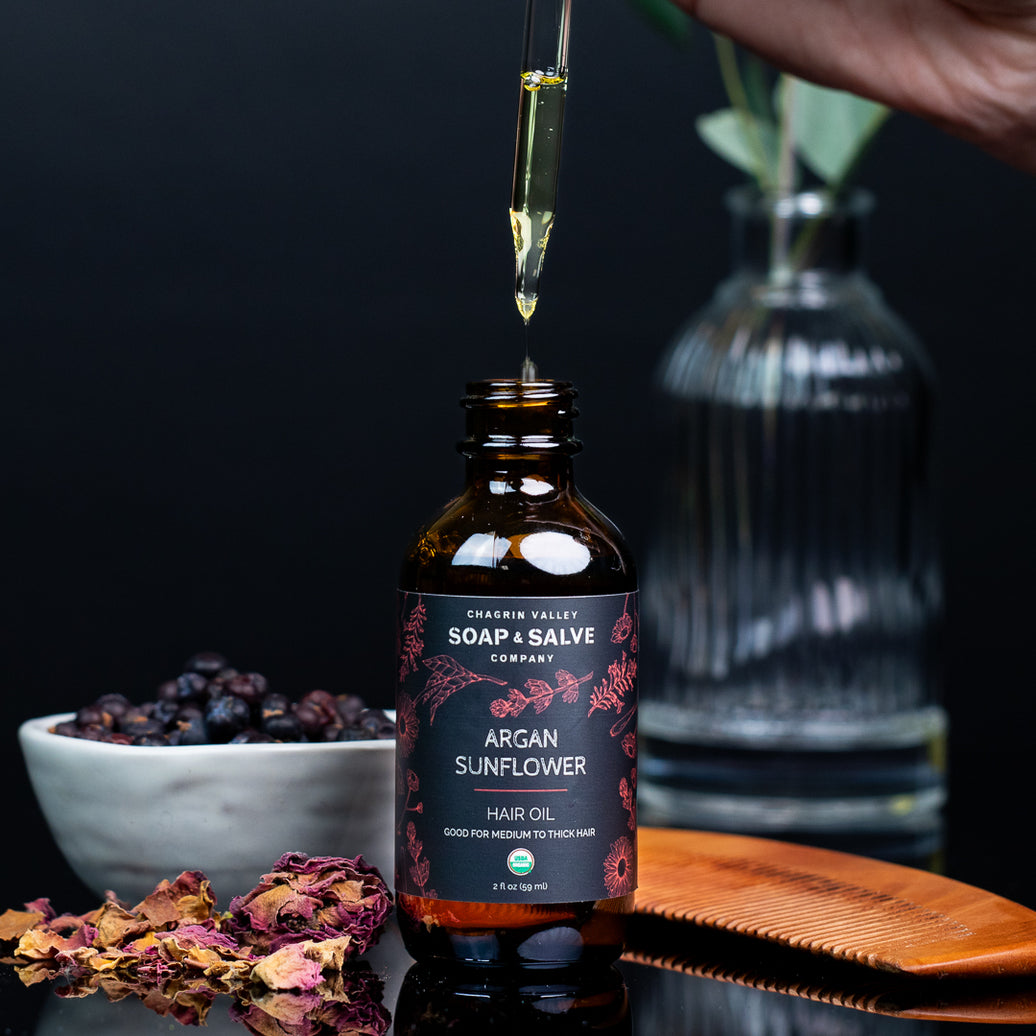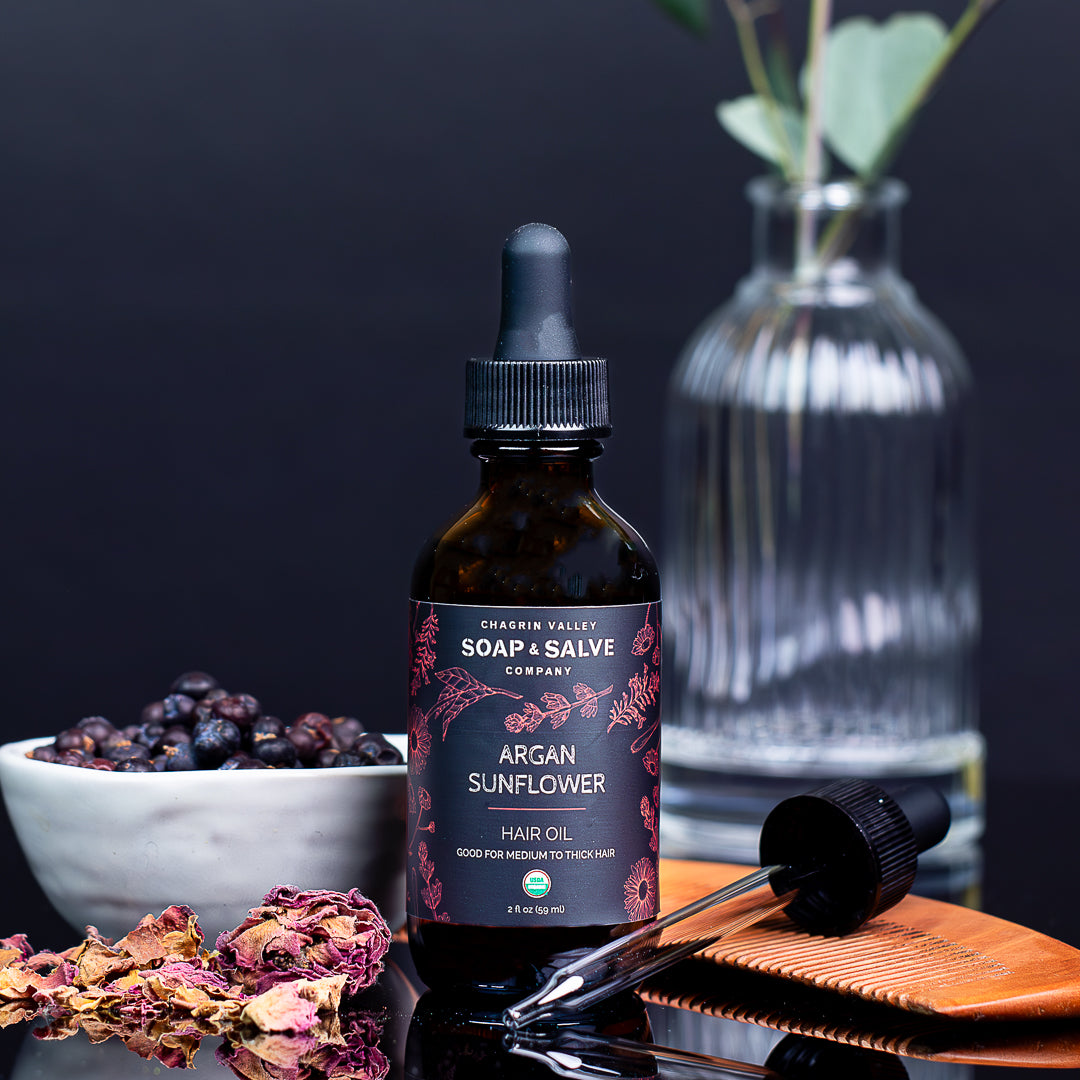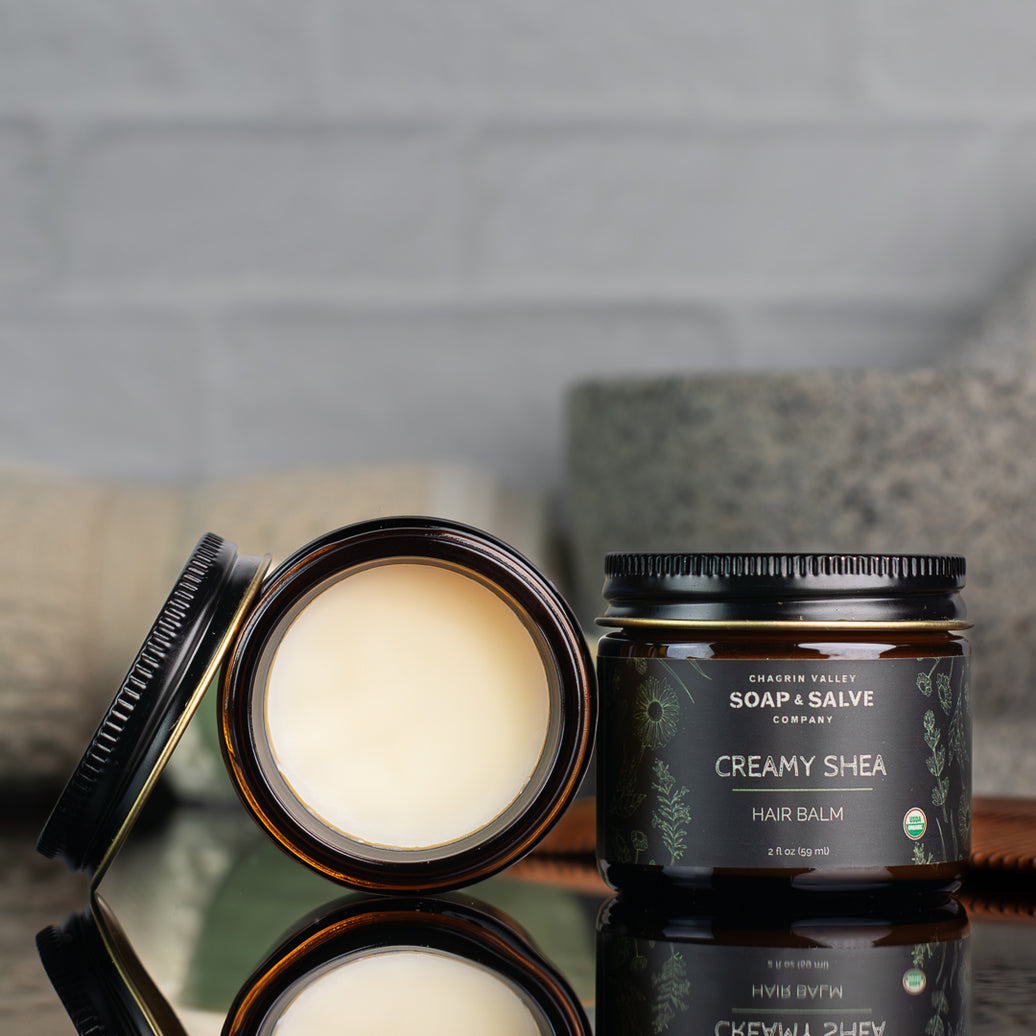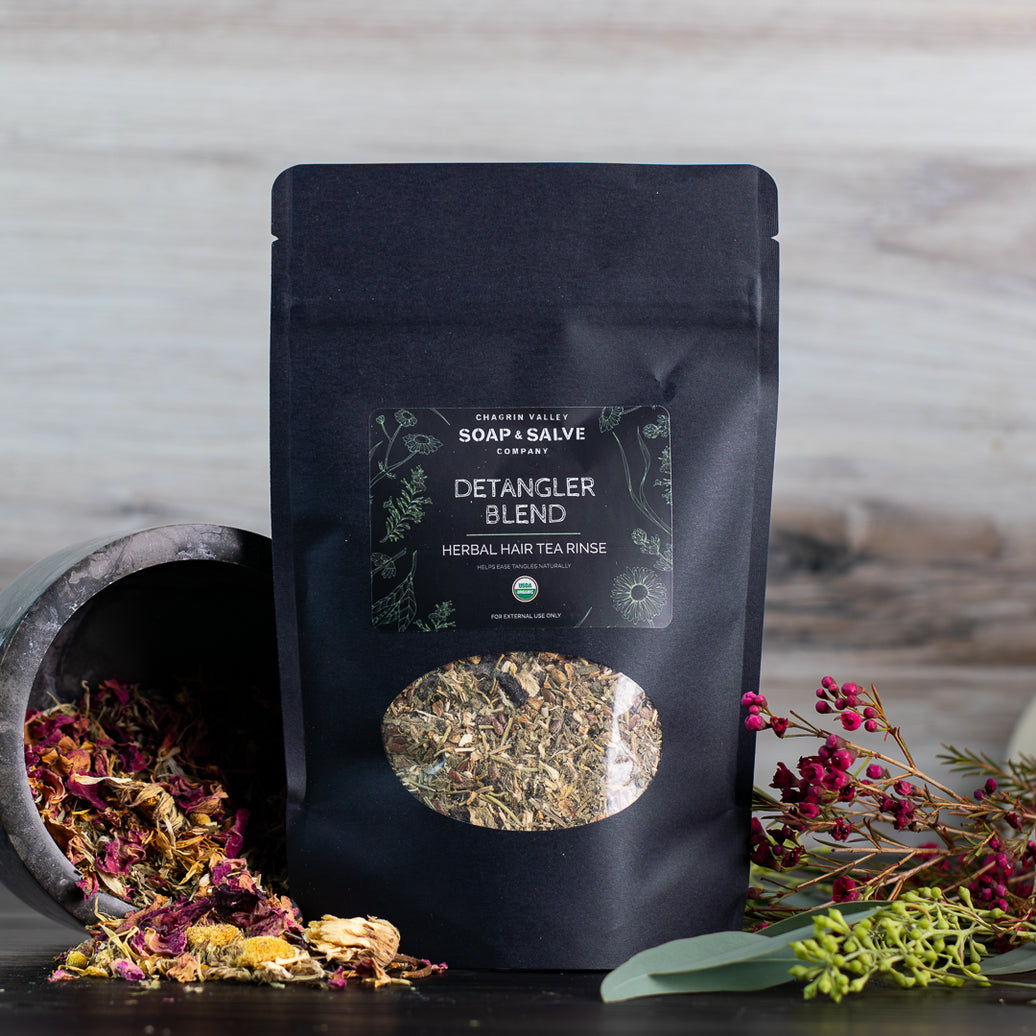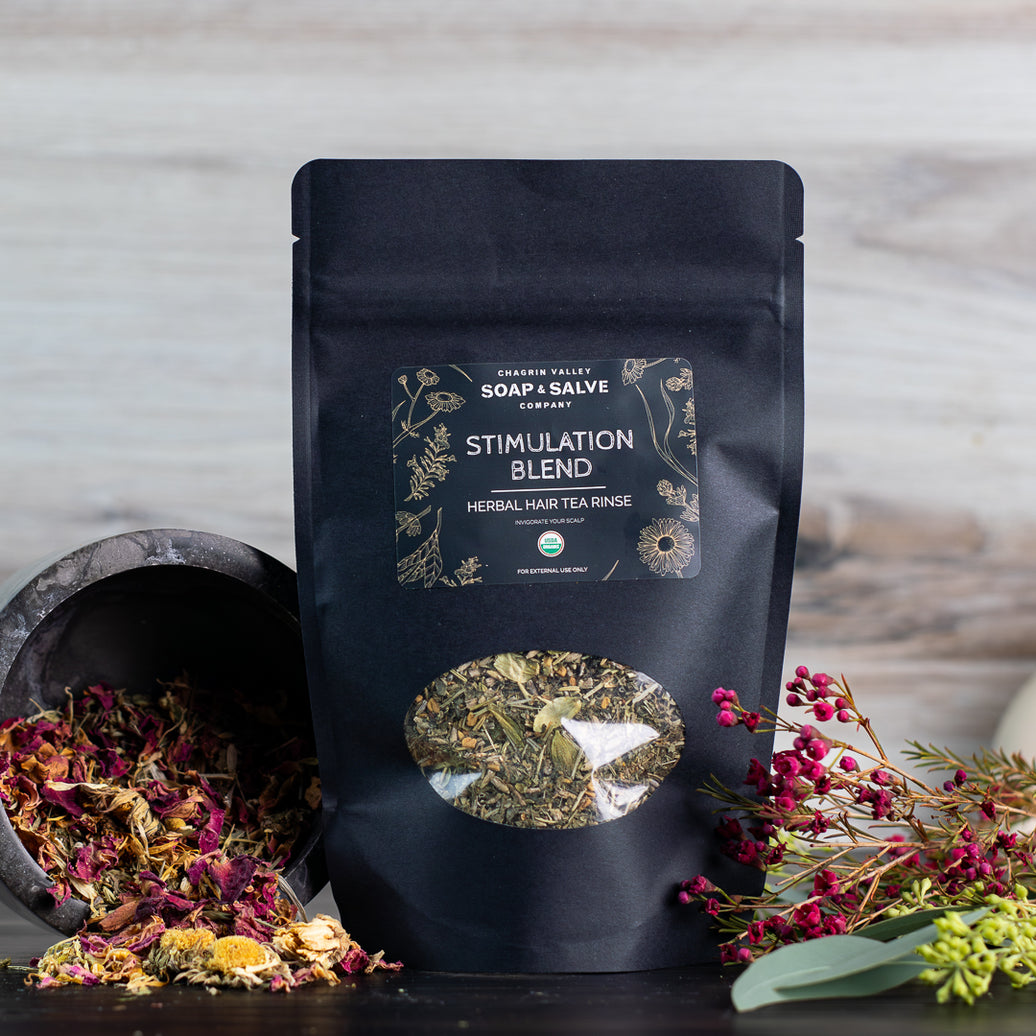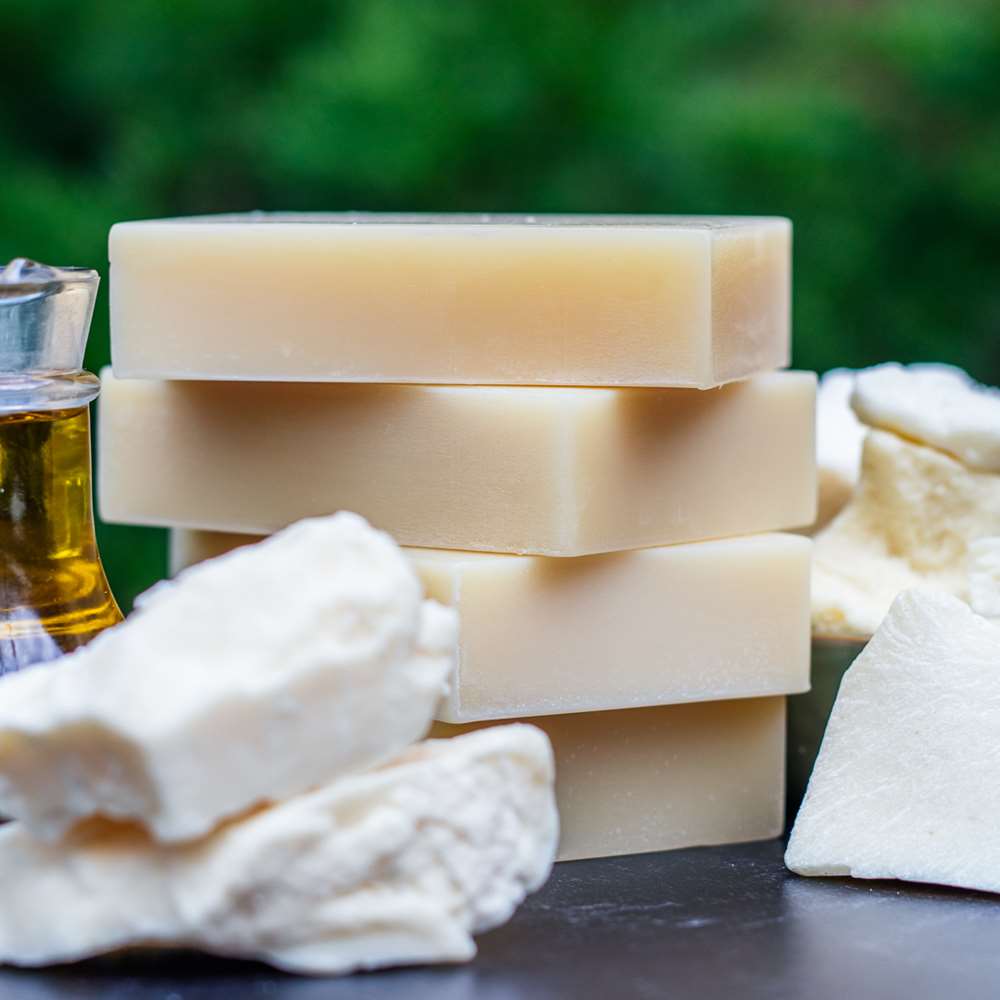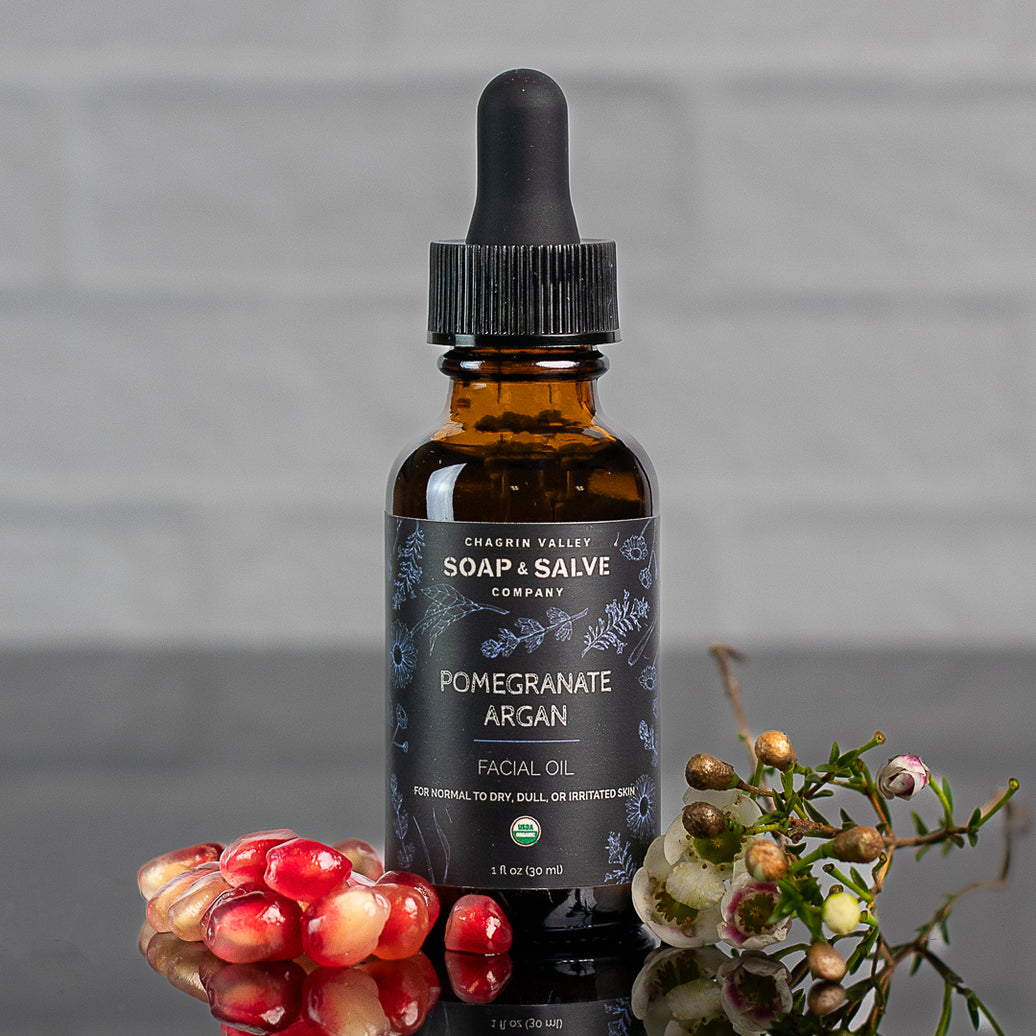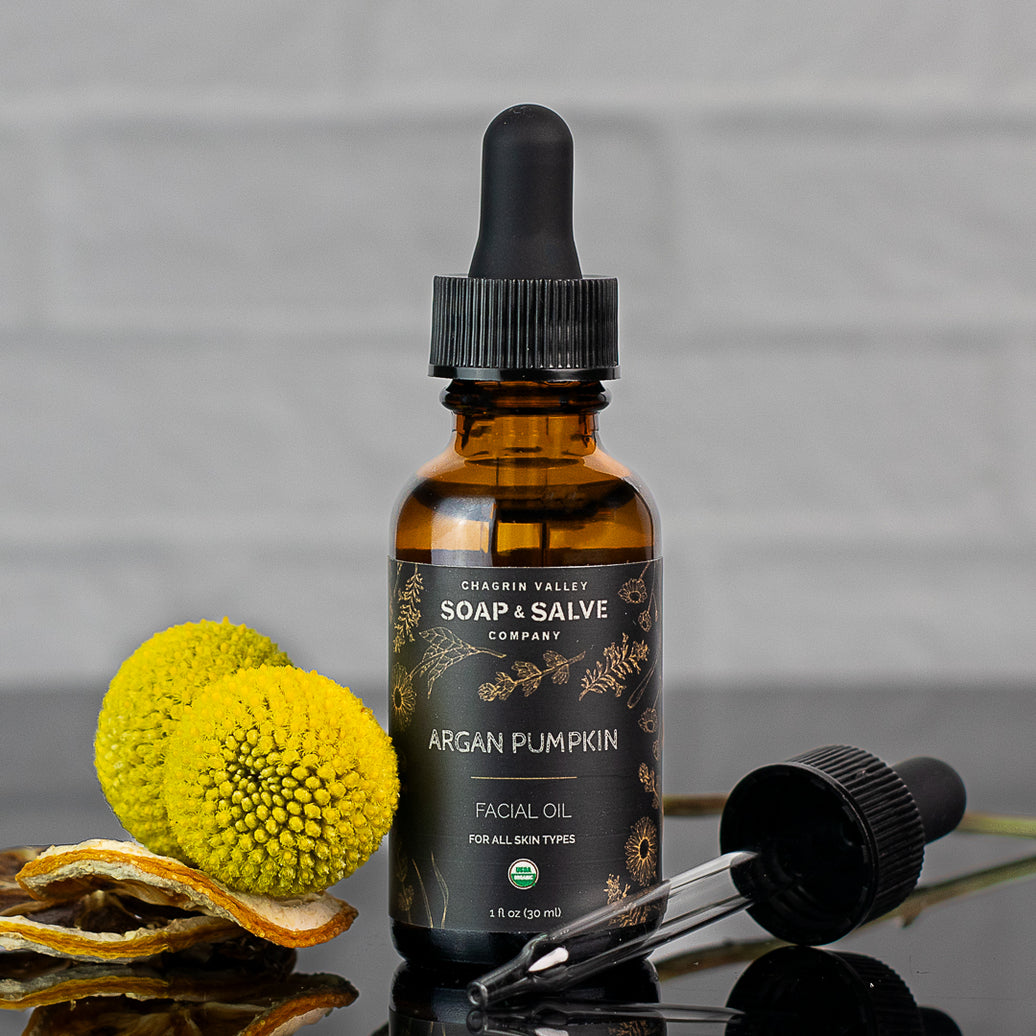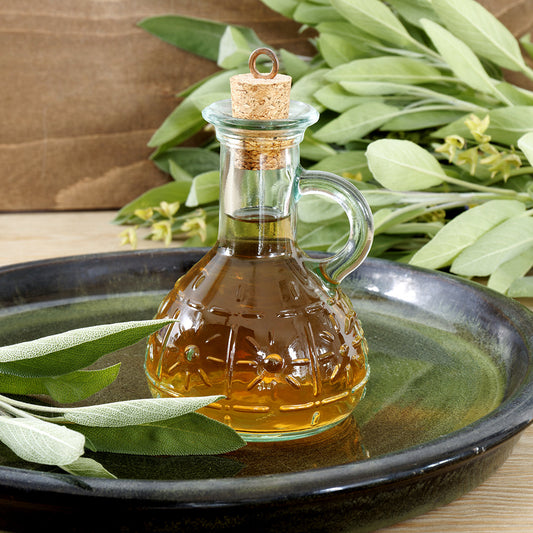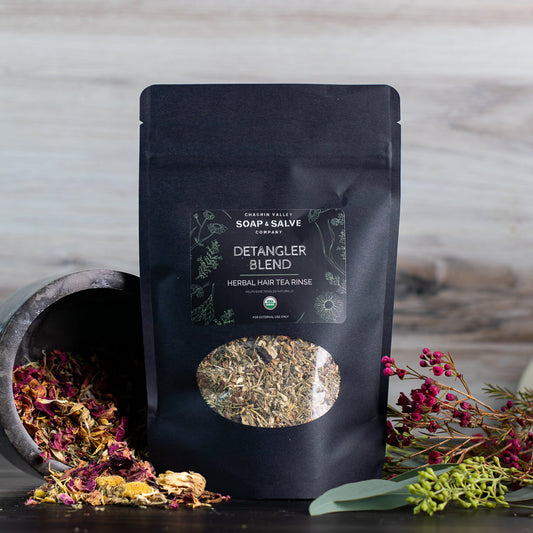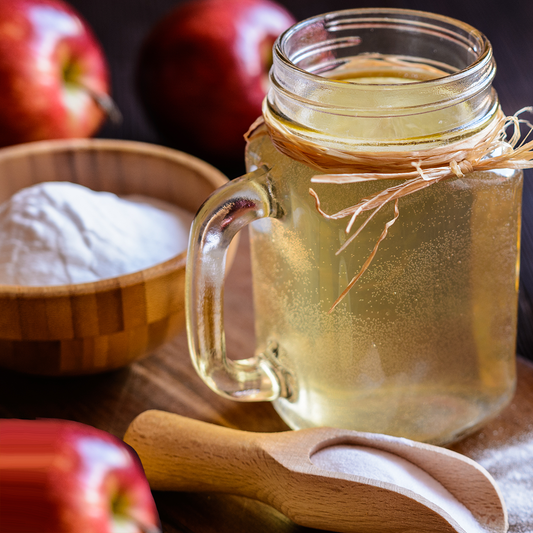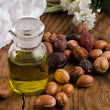
Aceite para el cabello: Argán y girasol
Aceite para el cabello: Argán y girasol
Un aceite orgánico para el cabello que contiene aceite de argán que ayuda a domar el cabello encrespado, estimula el crecimiento de un cabello sano y fuerte y promueve un cabello más suave y manejable.
- Out Of Stock






Product Overview
Good For: All Hair Types, Especially Medium to Thick Coarse or Curly Hair
Hair-oiling may be new to many people, but its benefits have been proven from centuries of ancient tradition. A hair oil can be helpful for any hair type, especially if it has become dry or damaged due to heat or over-processing. Naturally textured hair, which is drier than other hair types, is prone to breakage if it is not moisturized regularly. Our organic hair oils contain hydrating ingredients that provide a protective layer of moisture for those who need damage repair or those with curly or coily textured hair who choose to wear their hair naturally.
This organic hair oil contains Argan Oil, naturally rich in antioxidants, essential fatty acids, and natural squalene. Argan deep conditioning is great for medium to thick hair.
- Good for all hair types including color treated or damaged hair
- Argan oil helps tame frizz and promotes shine and softer, more manageable hair
- Argan oil contains Squalene, a natural component of our own skin oil or sebum, helps the skin and scalp regulate its sebum production and adds natural moisture
- Antioxidants promote circulation as they nourish and protect hair
- Essential fatty acids make hair stronger and stimulate growth, which helps prevent breakage and decrease shedding
- Promotes shine, softness, and manageability
Nutrient-rich sunflower oil moisturizes, nourishes and protects for silky, shiny, healthy hair. It provides your scalp and hair with nutrients to help nourish and strengthen hair. Moisture is the key to natural hair growth. The hydrating properties of sunflower promote scalp and hair health and are helpful for dry hair, damaged strands, dandruff, frizz or thinning.
Comes in a 2 oz. glass bottle
How To Use
The internet is filled with so much information about hair oiling, it can be quite overwhelming. Oil your hair but not your scalp! Oil your scalp but not your strands! Oil both! While your hair type, hair thickness, the climate in which you live, your diet and lifestyle, health, etc. all affect your hair, the bottom line is, your hair is unique to you. There is no one right way to use a hair oil on YOUR hair. What we offer below are some suggestion.
It is important to start small when applying a hair oil and to know what you are trying to achieve in the end. Begin with one or two drops (you may need a bit more for longer or thicker hair). If your hair looks greasy, heavy or seems weighed down, you have used too much. After a few applications of hair oil, you will learn your magic number for that perfect healthy, shiny, soft hair.
Basic Instructions
The most important thing about using a hair oil is to make sure it is distributed evenly. Sectioning your hair into layers, a top and bottom layer, can make distribution easier especially for those with thick or coarse hair.
- Place a small amount of oil (1 -2 drops) into your palms and warm it between your fingertips.
- Rake your hands and fingers through your hair like a comb to evenly distribute the oil through to the ends.
- Follow the same procedure for each layer section of hair.
Do You Apply Hair Oil to Dry or Damp Hair?
Whether you apply a hair oil to wet or dry hair depends on your hair type and the results you are looking for. Applying oil on damp hair will provide a bit less shine, but it can help detangle hair, bring out its natural texture as it dries, provide nourishment for the hair shaft, and protect it from unwanted frizz as it dries. If you blow dry your hair, this method can also provide some protection from the heat.
When applied to dry hair, the hair will have more luster, you will get better frizz control, and you can spot treat extra problem areas.
Deep Conditioning Pre-Wash Treatment
Use it as a pre-shampoo, deep conditioning treatment once or twice a week depending on your hair type. Your hair will become softer and easier to manage.
- Wet your hair
- Follow the basic instructions above
- Focus on the hair ends
- Wrap oiled hair in a shower cap or towel
- Leave it on for 30 to 60 minutes
- Wash with a mild shampoo and style as usual
- If you have damaged or very dry, coarse hair, leave the mask on overnight and wash off the next day
Tip: Any time you are leaving oil on your hair, cover your hair with a shower cap or towel. This keeps your head warm which helps the oils penetrate the hair shaft.
Hair Oil as an In-Shower Conditioner
Apply the oil using the basic method above and let it sit for 10 minutes while you complete the rest of your shower. Wash, rinse, and style as usual.
As A Leave-In Conditioner
On Damp Hair: Use as a leave in conditioner after shampooing to help prevent split ends, calm frizz and flyaways and add a healthy shine. Place a drop or two in the palm of your hand, rub palms together and scrunch into damp hair ends or smooth from mid-length to the hair ends. Comb thoroughly to evenly distribute the oil. Do not wash. Style as usual.
On Clean Dry Hair: To smooth down coarse or wiry flyaway hair strands and give hair a healthy sheen, rub a tiny bit of hair oil in your palms, apply to clean, dry hair.
Tip: Some like to spritz oil onto the lower length of their hair and hair ends and then massage it into the strands. This method works well if you have a bottle with a fine mist sprayer. Oils tend not to mist like water, so try your sprayer out first before squirting your hair.
Oiling for Fine or Thin, Straight or Wavy Hair
If you have fine or thin hair that seems dull and lifeless or tends to have wiry flyaways, a tiny bit of lightweight leave in-conditioner may just do the trick.
After shampooing for a healthy shine and to calm flyaways, place a drop of oil in the palm of your hand, rub palms together. Then rake your hands and fingers through your hair like a comb to evenly distribute the oil through to the ends.
You can do this on damp, towel-dried, or even dried hair, it just depends what works best for your hair. Be sure to work the oil through to the tips to help ease split ends. Comb your hair thoroughly to get the oil evenly distributed.
You can also just use a tiny bit of oil in your palms to scrunch into the ends of damp or dried hair to help ease the look of split ends. Just remember, only a tiny bit of oil is needed.
Should You Oil or Cream The Scalp?
For some people it is recommended to avoid applying oils or butters to the scalp. So when using a hair oil begin at least about three inches from the scalp and work all the way to the ends.
Whether or not to oil your scalp seems to be up for debate. While many articles encourage applying oil directly to your scalp, others state that applying oil directly on your scalp may put you at higher risk for dandruff. But some people with dry hair also have a dry scalp. If you typically oil your scalp without any problems then continue to do what your hair and scalp like.
For Dry Scalp: Using your fingertips gently massage a small amount of hair oil into your scalp. The actual massaging action is more important than the quantity of oil, it stimulate scalp circulation and aids in absorption. Then work the oil through your hair to the ends. Leave on for at least 15 minutes and then wash and style as usual.
Helpful Hints
- When using a hair oil balm more is NOT better. Too much conditioning cream can weigh your hair down, cause excess buildup, and give hair a greasy look and feel.
- Be sure to wash your hair to remove the residue from a previous application before applying more hair cream.
- Combining a hair oil with other hair products like mousses and gels may cause heavy buildup and greasiness.
Learn more: Read "What is Your Hair Type?"
If you have very sensitive skin or are simply trying a new product for the first time, we always recommend doing a patch test.
For external use only. Discontinue use if irritation occurs. Best if used within 6 months of opening.
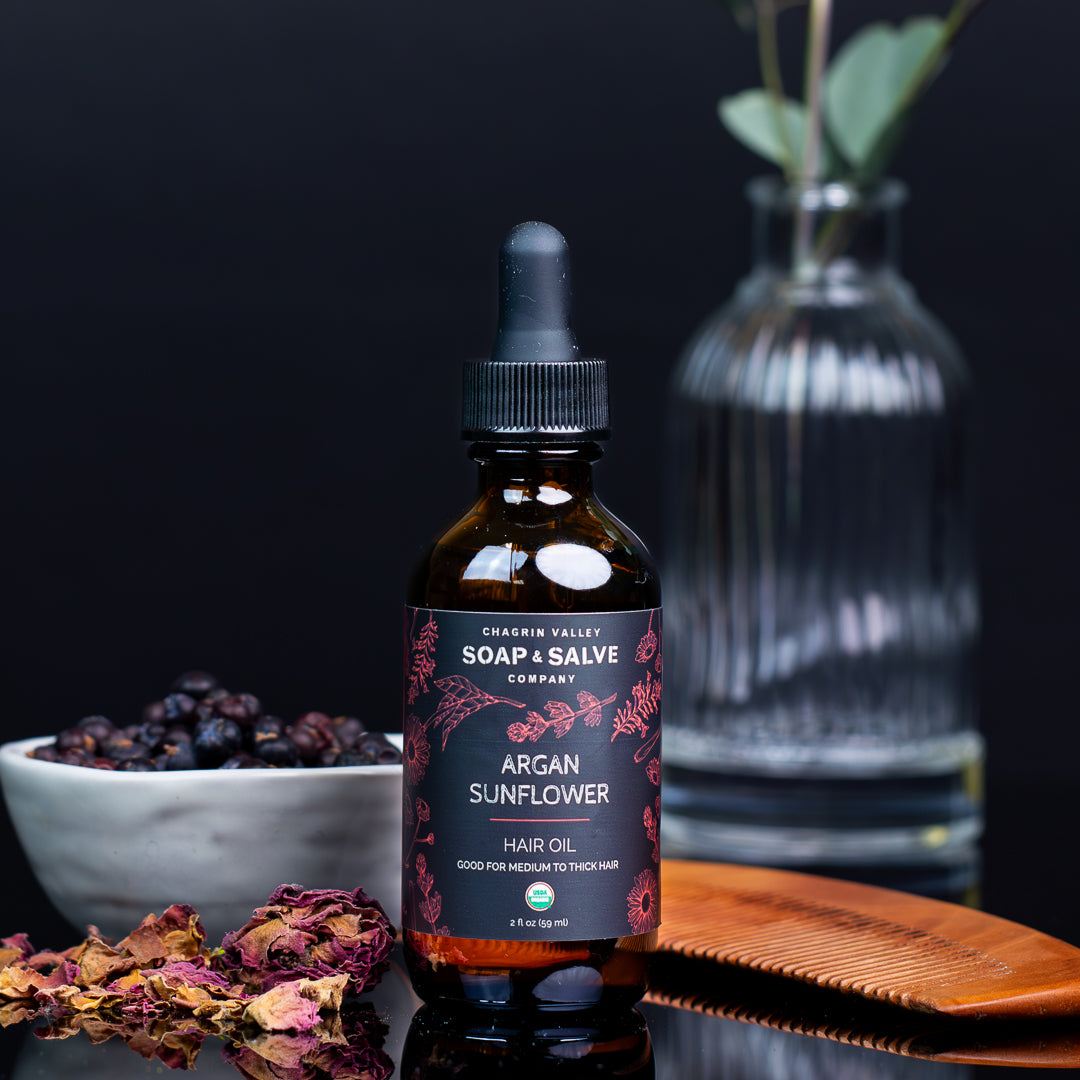

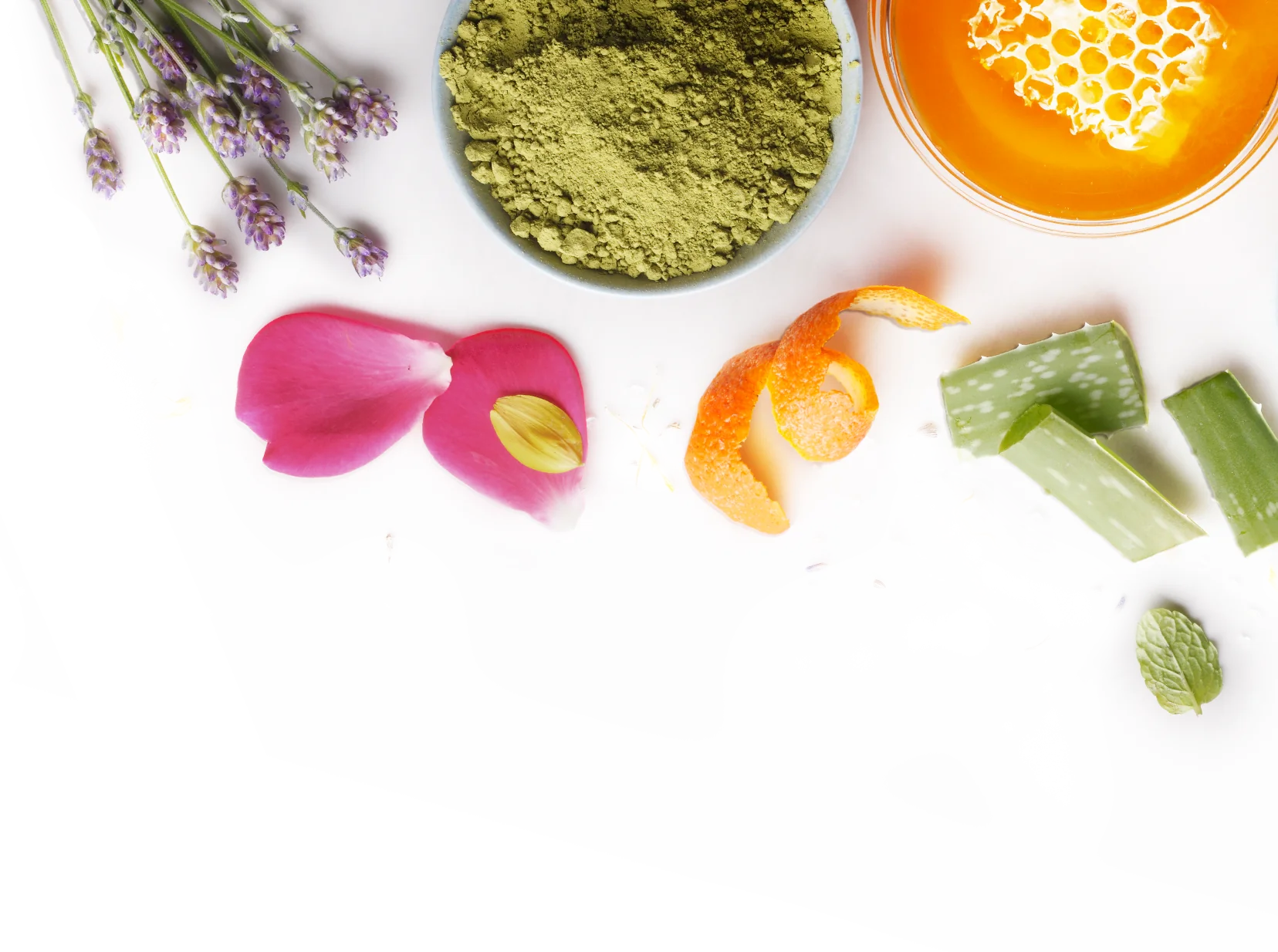
Ingredientes eficaces que te hacen sentir bien
El objetivo es simple: ¡aprovechar el poder y la simplicidad de la Naturaleza® para limpiar, calmar, sanar y proteger tu piel y cabello!
Nuestras fórmulas únicas se basan en aceites y mantecas hidratantes, ingredientes botánicos curativos y aceites esenciales puros. Seleccionamos cada ingrediente con un único objetivo: ¡el MEJOR cuidado natural de la piel para TI!
Ingredientes destacados

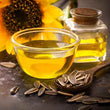
Organic Aceite de girasol
All Ingredients:
We use unrefined oils that have not been bleached or deodorized. These oils retain their natural scent, color, and nutritional benefits.
Preguntas frecuentes
¿Cuál es tu tipo de cabello?
¿Cuál es tu tipo de cabello?
De joven, tenía el pelo lacio como un diamante y envidiaba a mis amigas con el pelo ondulado y rizado. ¡Pero esas amigas envidiaban mi pelo liso! Ya sea liso, ondulado, rizado, ensortijado o algo intermedio, tu pelo es precioso.
De la misma manera que comprender tu tipo de piel es importante para crear una rutina de cuidado de la piel eficaz, determinar tu tipo de cabello puede desempeñar un papel importante para ayudarte a alcanzar tus objetivos capilares.
El tipo de cabello se divide en cuatro categorías principales: liso (tipo 1), ondulado (tipo 2), rizado (tipo 3) y ensortijado (tipo 4). Estos cuatro tipos de cabello se clasifican en los subtipos A, B y C, lo que da lugar a un total de 12 categorías.

La mejor manera de determinar tu tipo de cabello es observarlo en su estado natural. Con solo observarlo, puedes reconocer algunas características obvias. La próxima vez que te laves el cabello, déjalo secar al aire sin usar productos de peinado ni productos capilares. Esto te ayudará a definir la forma o textura natural de tu cabello. Por ejemplo:
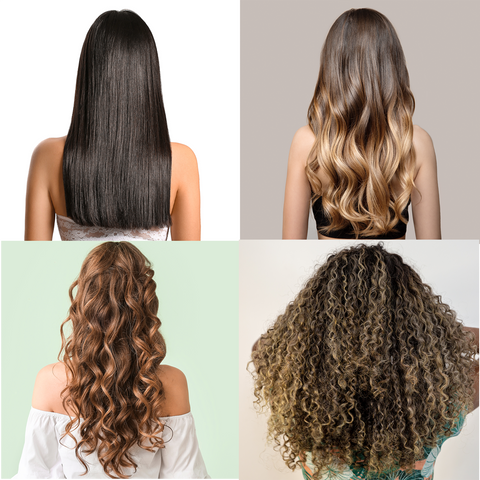
- Si tu cabello se seca liso, sin curvas ni rizos, entonces tienes cabello liso ( tipo 1 ).
- Si tu cabello se seca con una ligera curva o forma de “S”, entonces tienes cabello ondulado ( tipo 2 ).
- Si tu cabello se seca con un rizo definido, entonces tienes cabello rizado ( tipo 3 ). Este tipo de cabello rizado tiene rizos flexibles o tirabuzones, pero no es tan denso como el cabello crespo.
- Si al secarse tu cabello se encoge formando rizos apretados o espirales densos, entonces tienes cabello crespo ( tipo 4) , a menudo llamado cabello "natural". Este tipo de cabello es más frágil y propenso a romperse que otros, por lo que requiere una rutina de cuidado capilar más especializada.
Es importante recordar que la mayoría de las personas no tienen un solo tipo de cabello. Suelen tener dos texturas diferentes en distintas partes de la cabeza.
Cada una de estas texturas de cabello requiere cuidados especiales para realzar sus mejores características naturales. Además, aunque dos personas compartan la misma onda natural, no significa que tengan exactamente el mismo tipo de cabello. ¡Eres única!
¿Cuál es la densidad y el grosor de tu cabello?
Las palabras "grueso" y "fino" pueden ser confusas, ya que puedes tener mucho cabello muy fino y viceversa.
La densidad es el grosor o diámetro de una hebra de cabello. Para determinar la densidad de tu cabello, usa una sola hebra y compárala con el tamaño de un hilo de coser común. El cabello fino es más delgado que el hilo, el cabello mediano tiene un grosor similar y el cabello grueso es más ancho. La densidad del cabello puede afectar su reacción a ciertos productos y su adherencia a diferentes peinados. Existen tres categorías básicas:
- Delgado o fino
- Medio
- Grueso o basto
El cabello fino no se peina con facilidad. El cabello mediano es relativamente fácil de peinar y mantiene los rizos por más tiempo. Los mechones más gruesos son muy fáciles de rizar, pero al ser menos flexibles, pueden ser difíciles de peinar o de mantener su forma.
El grosor total se refiere a la cantidad total de cabello en el cuero cabelludo, que puede variar de fino a grueso. ¿Cuánto cabello puedes recoger al hacer una coleta?
¿Qué es la porosidad del cabello?
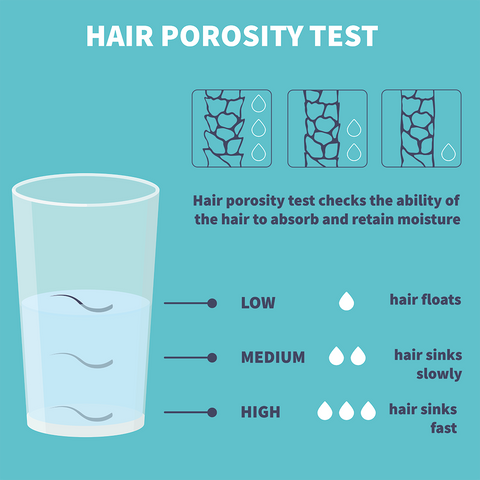 La porosidad se refiere a la capacidad del cabello para absorber la humedad y los productos capilares. Puedes determinar fácilmente la porosidad de tu cabello con un simple experimento.
La porosidad se refiere a la capacidad del cabello para absorber la humedad y los productos capilares. Puedes determinar fácilmente la porosidad de tu cabello con un simple experimento.
- Coloque una sola hebra de cabello en un recipiente con agua.
- ¿Se hunde la hebra? Si es así, tiene alta porosidad, lo que significa que absorbe mucha humedad debido a huecos o desgarros alrededor de la cutícula.
- ¿Se hunde la hebra, pero solo un poco? Si es así, tu cabello está absorbiendo la humedad justa para mantenerlo sano y equilibrado.
- ¿Flota el cabello sobre la superficie del agua? Si es así, tu cabello tiene baja porosidad, lo que significa que no absorbe la humedad fácilmente.
Parece que el cabello con alta porosidad se mantiene bien hidratado en todo momento, ya que absorbe la humedad con facilidad. Sin embargo, debido a las zonas de separación alrededor de la cutícula, el cabello también pierde humedad con mucha facilidad, lo que puede resultar en un cabello seco, quebradizo, con frizz y propenso a romperse.
Por otro lado, las cutículas aplanadas del cabello con baja porosidad impiden que la humedad se absorba en las fibras capilares. Dado que los productos para el cuidado capilar no se absorben fácilmente, la acumulación de producto en las fibras capilares suele ser un problema. Los productos para el cuidado capilar deben aplicarse con moderación mientras el cabello aún está húmedo para que se absorban y distribuyan mejor.
Para mantener tu cabello sano y nutrido, es importante desarrollar una rutina de cuidado capilar que incluya una hidratación adecuada. Conocer tu tipo de cabello es crucial, ya que te ayuda a elegir los productos adecuados para cabello liso, ondulado, rizado o crespo.
View Answer Page
¿Los ingredientes y productos de Chagrin Valley están certificados como orgánicos por el USDA?
Chagrin Valley Soap & Salve es una empresa orgánica certificada por el USDA

La consideración más importante en cualquier negocio son sus clientes. El mundo actual, plagado de afirmaciones engañosas, publicidad engañosa y simple engaño, a menudo deja a los consumidores intentando descubrir la verdad sobre los productos personales y sus ingredientes.
- Queremos que nuestros clientes sepan que estamos comprometidos con la transparencia en todo lo que hacemos.
- Queremos que nuestros clientes sepan que cuando decimos “ orgánico”, lo decimos en serio.
- Creemos que al convertirnos en una empresa orgánica certificada por el USDA, nuestros clientes no tienen que preguntarse si realmente utilizamos ingredientes orgánicos certificados o si nuestros productos orgánicos son verdaderamente orgánicos.
- Por eso elegimos ser una empresa orgánica certificada y cumplir con los estrictos estándares requeridos para la certificación orgánica.
Algunos de mis productos favoritos están elaborados con ingredientes que simplemente no cuentan con certificación orgánica. ¿Por qué? Actualmente no existen estándares para los ingredientes utilizados específicamente en la industria de productos de cuidado personal. La certificación orgánica de productos de cuidado personal se basa en los estándares de alimentos orgánicos establecidos por el Programa Nacional Orgánico del USDA.
Pero como somos una empresa orgánica certificada, estamos obligados a presentar documentación que acredite que incluso nuestros "ingredientes no orgánicos" se produjeron sin el uso de pesticidas tóxicos, organismos genéticamente modificados (OGM), lodos de depuradora o irradiación.

¿Por qué nos convertimos en una empresa orgánica certificada?
¿Qué significan todas las etiquetas orgánicas?
View Answer Page
¿Sus productos e ingredientes son libres de crueldad animal?
Todos los jabones, champús y productos de cuidado personal naturales de Chagrin Valley están certificados como libres de crueldad animal por Leaping Bunny.
Chagrin Valley Soap & Salve cuenta con la certificación Leaping Bunny desde 2013.
 El Programa Leaping Bunny fue desarrollado en 1996 por la Coalición para la Información al Consumidor sobre Cosméticos (CCIC) para identificar y apoyar a las empresas que contribuyen a eliminar el uso innecesario y el maltrato de animales en las pruebas de productos e ingredientes cosméticos. La CCIC está compuesta por ocho organizaciones de protección animal, entre ellas la Sociedad Protectora de Animales de Estados Unidos, así como organizaciones de Canadá y Europa.
El Programa Leaping Bunny fue desarrollado en 1996 por la Coalición para la Información al Consumidor sobre Cosméticos (CCIC) para identificar y apoyar a las empresas que contribuyen a eliminar el uso innecesario y el maltrato de animales en las pruebas de productos e ingredientes cosméticos. La CCIC está compuesta por ocho organizaciones de protección animal, entre ellas la Sociedad Protectora de Animales de Estados Unidos, así como organizaciones de Canadá y Europa.
En Chagrin Valley no probamos nuestros productos terminados en animales (excepto en voluntarios humanos). Pero ¿qué pasa con las materias primas y los ingredientes que utilizamos?
Muchos productos muestran etiquetas que afirman que el producto final “no ha sido probado en animales”, pero esto no garantiza que los ingredientes del producto estén realmente libres de pruebas en animales.
El Estándar CCIC es un compromiso que asume una empresa para eliminar las pruebas en animales en todas las etapas del desarrollo de sus productos. Nuestro compromiso de comprar ingredientes libres de crueldad animal está integrado en el contrato de compra con todos nuestros proveedores.
Los productos de cuidado personal que muestran el logotipo auténtico de Leaping Bunny cuentan con la certificación "cruelty free" (libre de crueldad animal) según los Estándares de Cosmética Humanitaria, reconocidos internacionalmente. Estos rigurosos estándares exigen que la empresa, sus laboratorios o sus proveedores no realicen ni autoricen pruebas en animales para los productos terminados ni para ninguno de sus ingredientes en ninguna etapa de desarrollo del producto, después de una fecha límite establecida. Todas las empresas de Leaping Bunny se someten a auditorías independientes y a compromisos de compromiso que se renuevan anualmente.
Esta renovación anual es un requisito clave que distingue al Programa Leaping Bunny de otros programas de certificación libres de crueldad animal. Las empresas que fabrican productos, así como sus proveedores de ingredientes, deben renovar anualmente su compromiso de no realizar pruebas en animales en ningún producto terminado, ingrediente o fórmula.
¿Por qué es importante esta renovación anual del compromiso? "Las formulaciones de los productos cambian, los proveedores van y vienen, y los fabricantes desarrollan líneas innovadoras para satisfacer las necesidades de los consumidores. Pero sabemos que los consumidores compasivos necesitan tener la seguridad de que los productos que utilizan no se someten a pruebas en animales".
En Chagrin Valley Soap & Salve...
- NO probamos nuestros productos en animales
- NO utilizamos ingredientes probados en animales
- NO vendemos en mercados que requieren pruebas en animales
El programa Leaping Bunny ofrece
La mejor garantía para los consumidores
que están tomando decisiones de compra compasivas
¡Comprando productos para el cuidado de la piel libres de crueldad animal!
View Answer Page
¿Qué es una barra de champú natural?
¡Las barras de champú son uno de nuestros descubrimientos favoritos!
La bondad saludable de nuestro jabón artesanal está disponible para tu cabello.
Las barras de champú son un champú acondicionador totalmente natural en formato sólido. Sí, es champú de verdad en una barra sólida. Las barras de champú no son una novedad.
Se usaban comúnmente antes de que se inventaran los champús y acondicionadores detergentes líquidos en la década de 1940.
Aunque el proceso para hacer una barra de champú es el mismo que para hacer jabón, nuestras "recetas" de barras de champú están especialmente formuladas con aceites vegetales naturales, mantecas, ingredientes botánicos y aceites esenciales que nutren el cabello y el cuero cabelludo.
Nuestras barras de champú no contienen fragancias artificiales, colorantes, conservantes, detergentes, alcohol, urea, formaldehído, lauril sulfato de sodio, DEA, propilenglicol ni ningún otro aditivo sintético para el cuidado del cabello.
Cada una de nuestras selecciones de champú sólido contiene una mezcla diferente de aceites vegetales naturales, aceites esenciales y aceites con infusión de hierbas. No hay dos recetas iguales.
¿Qué barra de champú es mejor para mi cabello?
¡Haga clic aquí para obtener ayuda para elegir una barra de champú totalmente natural!
¡Todo lo que quieres saber sobre las barras de champú!
¡Por favor lea "Todo sobre las barras de champú"!
View Answer Page
